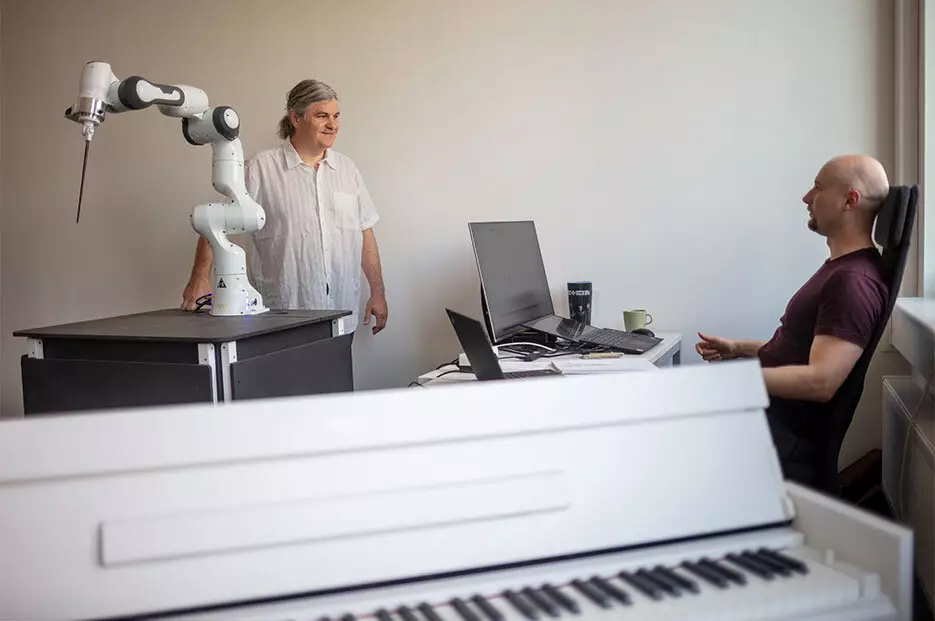In an intriguing intersection of technology and artistry, a groundbreaking three-armed robot has made headlines by stepping onto the podium as a conductor. This mechanical maestro made its first public appearance in Dresden, Germany, skillfully directing live performances with extraordinary precision, specifically designed to showcase its unique capabilities. Unlike traditional conducting—often dominated by human interpretation—the robot’s structured, programmed movements reflect a fascinating approach to the interpretation of music.
Equipped with three arm-like appendages resembling futuristic light sabers, the robot is engineered to independently manage multiple tempos and dynamics. This functional sophistication proved especially advantageous when it conducted “Semiconductor’s Masterpiece,” a composition crafted by Andreas Gundlach, which demonstrated the robot’s versatility in coordinating various orchestra sections simultaneously. Such independence allows for a distinct performance style that surpasses what a single human conductor might achieve, effectively transforming the orchestra’s creative dynamics.
Gundlach’s collaboration with the Technical University of Dresden was pivotal in bringing this innovative concept to life, taking two years to develop and refine the robot’s conducting skills. The notion of developing a “collaborative robot,” or cobot, emphasizes a partnership rather than a competitive relationship between machines and human beings. This philosophical underpinning highlights a shift in perspective as robotics increasingly become tools to enhance human creative processes rather than simple replacements for human roles.
Speaking at the premiere, Gundlach expressed that the journey of training the robot was both enlightening and humbling. His initial expectations of creating a robotic conductor were transformed into a deeper appreciation for the intricacies of human capability. The focus on aesthetically pleasing arm movements, which are essential for effective conducting, highlighted the innate complexity and skill inherent in human performance. Gundlach’s experience serves as a poignant reminder of the nuances involved in live music, which are not merely technical but deeply expressive.
This artistic project is not just about technology but also about exploring new frontiers in performance art. The robot’s ability to conduct music pieces like “#kreuzknoten” by Wieland Reissmann—a composition featuring instruments playing in fluctuating tempos—demonstrates its adaptability and offers a glimpse into future possibilities of augmented musical collaboration.
The introduction of robotics into orchestral performance has far-reaching implications. It invites a re-examination of the roles of conductors and musicians alike, raising questions about identity in artistic performance and the potential for new forms of expression. As technology continues to evolve, the enduring nature of human creativity and emotion in music may need to be reconciled with the precision and structure offered by intelligent machines.
As robotic conductors emerge from the lab into the concert hall, they will challenge our conventional understanding of music-making. The experiment in Dresden marks a significant moment in the ongoing dialogue between human artistry and technological advancement, stimulating curiosity and engagement that could inspire future generations of musicians and innovators alike.


Leave a Reply